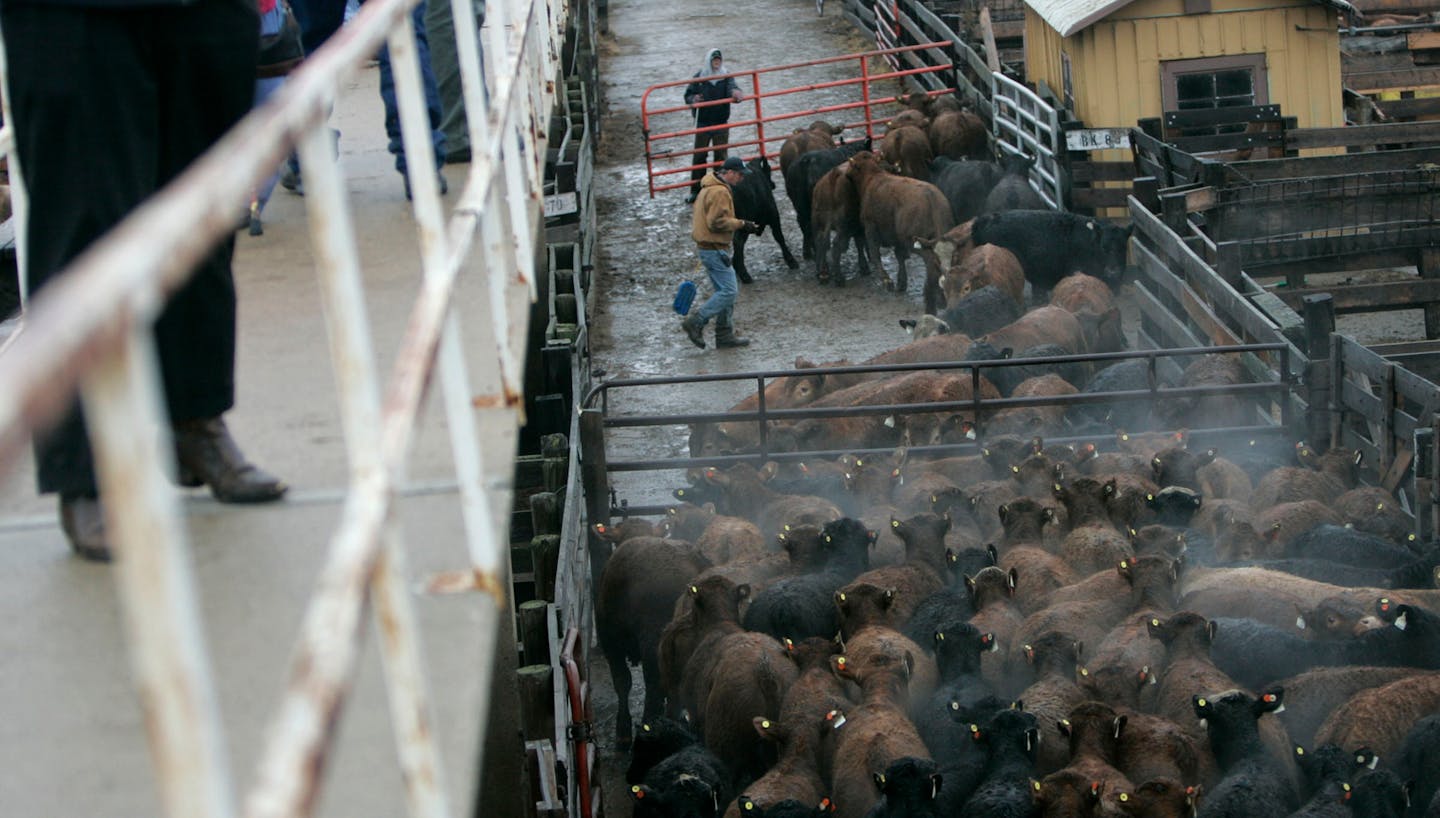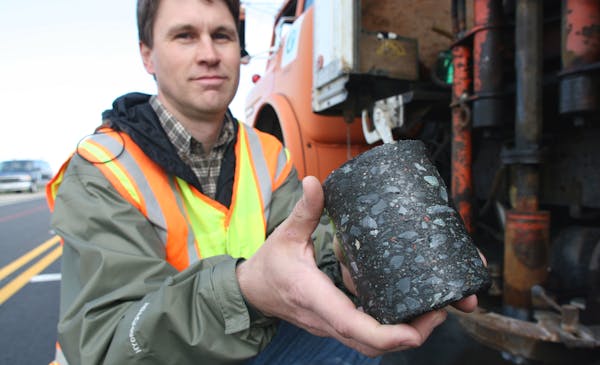Listen and subscribe to our podcast: Via Apple Podcasts | Spotify | Stitcher
New York is so nice they named it twice. But St. Paul is so sublime they named it five times.
The moniker extends beyond the capital city itself to many of its neighboring suburbs: West St. Paul, North St. Paul, South St. Paul and St. Paul Park. And in a somewhat maddening twist, those city names don't always neatly line up with the compass.
Lake City resident Dennis Stanley started wondering about those similar city names while driving past a blizzard of "St. Paul" signs in the east metro. He sought answers on why there are so many St. Pauls — yet no East St. Paul — from Curious Minnesota, the Star Tribune's community reporting project fueled by great reader questions.
Historians say three factors drove the development and naming of these other St. Paul cities: the river, a desire for autonomy and marketing.
St. Paul officially became a city in 1854, several years after it was named capital of the Minnesota Territory.
"It was the head of transportation on the Mississippi River. It's a very important place," said T.J. Malaskee, executive director of the Maplewood Area Historical Society. "It's the place where the fur trade is meeting the commercial centers of the east."
West St. Paul
Before long, residents outside St. Paul formed the city and surrounding township of West St. Paul in 1858. The township's expansive boundaries hugged the west bank of the Mississippi River, including what is now South St. Paul and St. Paul's West Side neighborhood.
"Even though it's directly south of St. Paul proper, it's on the west bank of the Mississippi River," Malaskee said.
The West St. Paul township continued to change shape, becoming a bit smaller when St. Paul annexed its northern portion — the present day West Side neighborhood — in 1874. Then it changed names altogether in 1887, when it was temporarily christened the new city of South St. Paul.
South St. Paul
Industrialists began buying up township land along the Mississippi River in 1886, opening the St. Paul Union Stockyards and attracting new residents to the area, according to the Dakota County Historical Society. The township incorporated as the city of South St. Paul in 1887 and the name West St. Paul was temporarily wiped from the map.
The city was geographically south of St. Paul, but the name choice was also motivated by marketing, Malaskee said. The association with Minnesota's booming capital city was good for business.
"It was branding. We are going to tie ourselves to St. Paul. We are going to tie ourselves to the Capital. But we want some autonomy," Malaskee said.
Tensions quickly escalated between farmers and industrial interests in the new city of South St. Paul. The farmers successfully petitioned the Legislature to break off half of South St. Paul to form a new city of West St. Paul in 1889.
West St. Paul was back on the map — where it is today.
North St. Paul
Marketing also strongly influenced the creation and naming of North St. Paul.
Entrepreneur and Civil War veteran Henry Castle purchased 1,200 acres of land northeast of St. Paul with the vision of creating a working man's utopia. The development was originally called Castle after its founder, but was later changed to North St. Paul. It became a city in 1887.
"They [were] also branding," Malaskee said. "They are thinking, 'What is the best way to brand this, sell this land and make money?' They do that by calling themselves the North St. Paul Land Company. St. Paul already has a really good name."
Malaskee said it wasn't just profits that motivated Castle to start a new city.
"He had fought and served during the Civil War. He had seen this destruction. He had seen the national government split in two and the working man, the common man was the one fighting the battles," Malaskee said. "A seed was planted in him. He wanted to create this working man's utopia."
A dozen factories and more than 80 homes were built in the new city. But the 1893 financial panic dimmed the city's bright future, according to a history on the city's website.
St. Paul Park
Similarly, St. Paul Park's origins are rooted in an ambitious business venture. In 1887, the St. Paul Park Improvement Company purchased land on the east side of the river and marketed it as Minnesota's next great city.
"A few hundred dollars invested in St. Paul or Minneapolis a few years ago would have made the investor wealthy. The same chance ... exists today in St. Paul Park, the young and rival city," according to a promotional piece published by the company in 1888.
East St. Paul?
So why is there no East St. Paul?
The city of St. Paul annexed much of its eastern neighbors, New Canada and McLean townships, throughout the late 1800s. It wasn't until 1957 that the city of Maplewood incorporated on St. Paul's east and northern border.
Why didn't they name the newly incorporated city East St. Paul? Again, market forces influenced city founders. Suburbia was booming after World War II and the suburb's forefathers believed an idyllic name would attract new residents — complete with an origin story and photo ops of families planting majestic maple trees.
"The first mayor decided Maplewood sounded really suburban at the time. The story was he went into the backyard, found a maple leaf and that became the city logo." Malaskee said.
West Minneapolis
In the west metro, the suburbs we know today don't borrow Minneapolis' name. But there was once a West Minneapolis.
The village of West Minneapolis existed for about four decades until city leaders changed the name to Hopkins in 1928, in honor of a founding family who had placed their name of the rail station.
"For years, area residents had called the area both West Minneapolis and Hopkins. The railroad station had been named Hopkins at the request of Harley Hopkins, an early settler who lived just east of present Hwy. 169," explained Mary Romportl, interim president of the Hopkins Historical Society.
Hopkins was also the stationmaster and the postmaster.
"That's why mail was addressed to Hopkins, even though the area was legally named West Minneapolis," Romportl said.
If you'd like to submit a Curious Minnesota question, fill out the form below:
Read more Curious Minnesota stories:
Why is 'southeast' Minneapolis actually northeast of downtown?
Why do tiny cities like Lauderdale, Landfall, Lilydale, & Falcon Heights exist?
What's the story behind the names of Pilot Knob, Johnny Cake and Yankee Doodle roads?
Why does I-35E through St. Paul have a 45-mph speed limit?
St. Paul vs. Minneapolis: Why can't the Twin Cities get along?







